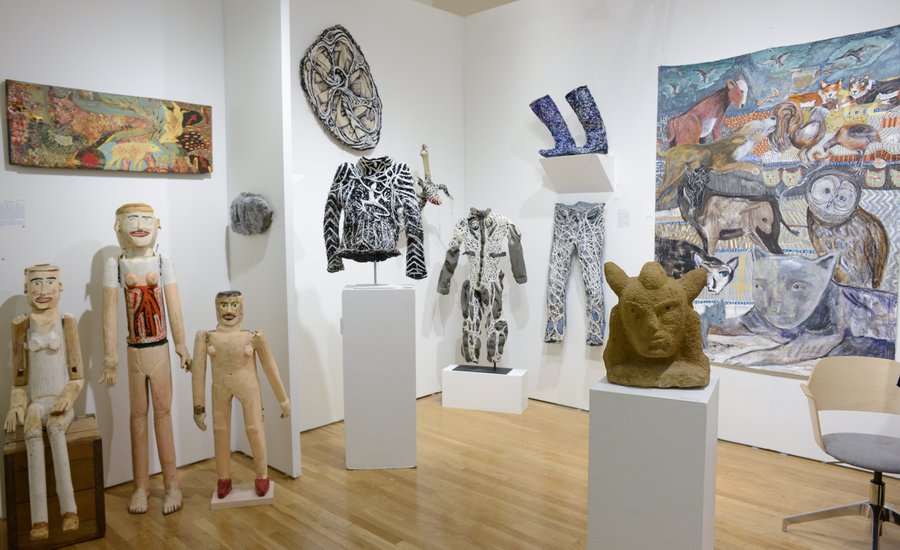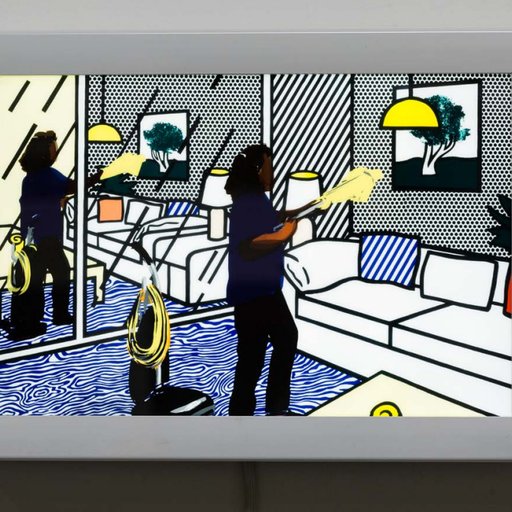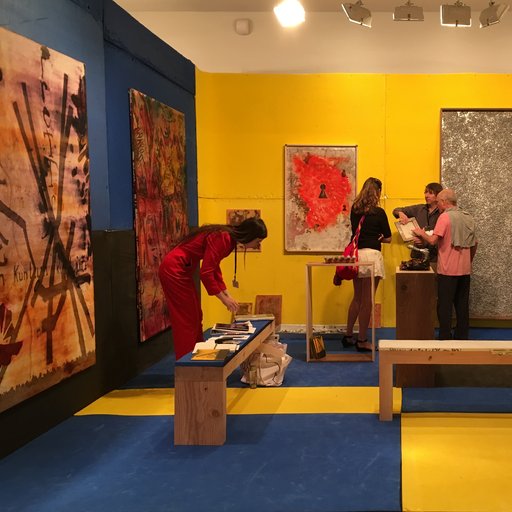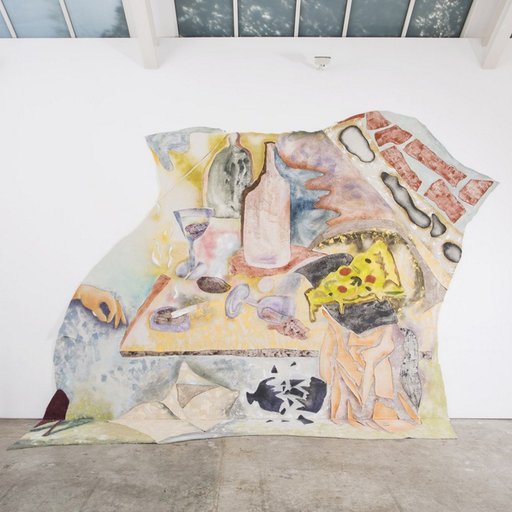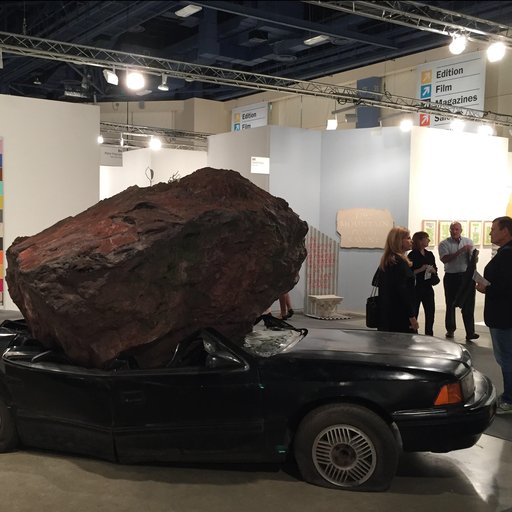Outsider art often comes with a fascinating backstory: Henry Darger ’s obsessive passion for his Vivian Girls, the quiet efforts of Thornton Dial laboring in obscurity, the mystery of the Philadelphia Wireman , the forgotten struggles of innumerable mentally ill or imprisoned artists to make works that mean something, if only to themselves. It’s these stories, so different from the BFA-MFA-residency-gallery-museum path of most contemporary artists working today, that give outsider artworks a sense of power and value that goes beyond formal attributes.
In an art world where deskilling is de rigueur and where art for art’s sake is regarded with suspicion at best, these stories allow observers to revel in the classic myth of the artist as one who physicalizes their deepest feelings by necessity rather than for profit. Perhaps that’s part of the rationale behind the recent ascendance of the genre , which, if the star-studded opening night and smattering of hip Lower East Side galleries exhibiting is anything to go by, seems to be on its way to being co-opted by the mainstream art world.
Whatever you make of these developments, compelling stories are still a hallmark of the fair. Here are five of the lesser-known tales to be found within the booths at this year’s edition of the Outsider Art Fair (on view through January 24 at the Metropolitan Pavilion in Manhattan).
JEAN-DANIEL ALLANCHE
Galerie Herve Pedriolle
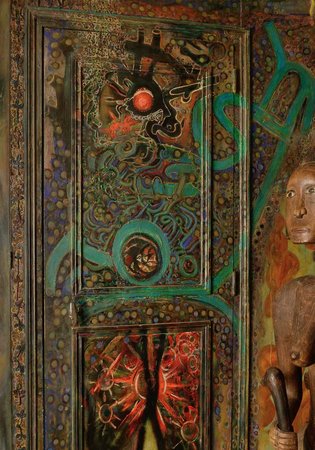

In many ways, the story of Jean-Daniel Allanche (1940-2015) is the prototypical tale of the outsider artist, at least as established by giants like Henry Darger: a mysterious figure zealously working on a Gesamtkunstwerk of epic proportions from the privacy of his own home, only to be celebrated posthumously. Allanche (or Jda, as he signed many of his pieces) was a physics professor and researcher in Paris, but his real work took place in the confines of his apartment. The extent of his effort was revealed only after his death last year, when his daughter (a friend of Hervé Perdriolle) allowed the gallerist access to her father’s rooms. There, they found the floor-to-ceiling paintings Allanche had been working on since the purchase of his apartment in 1975, along with a collection of gouaches, paintings, sketchbooks, and souvenirs from his global travels (he apparently had a penchant for traditional African and Indian sculpture).
His notebooks reveal an omnivorous mind with a passion for music and gambling (especially roulette) as well as art and science, pursuits which he labored to connect through his creative output. Many of his paintings, which alternate between impressionistic flourishes and hippie bus psychedelia, often show repeated molecular forms adding up to a greater, stranger whole; his notebooks, meanwhile, are filled with roulette numbers and notes that seem to fulfill a similar purpose. Indeed, his body of work can be read as an ongoing effort to fuse these interests into a single system with which to structure his life—an intensely private effort he was apparently uninterested in sharing with the wider world.
AGATHA WOJCIECHOWSKY
Life on Mars


The German-American artist Agatha Wojciechowsky represents one of the newer and much-discussed trends in outsider art today, the effort to celebrate the work of artists with deeply idiosyncratic, often seemingly sui generis approaches who nonetheless don't fit the typical "outsider" profile. Wojciechowsky (1896-1986) was not a recluse or a prisoner; rather, she traveled the world as a medium in the Spiritualist tradition (a short-lived but wildly popular religious movement of turn-of-the-century America and Great Britain), allowing herself to become possessed by the sprits of the dead in order to commune with their grieving loved ones.
With no formal artistic education, she began to produce drawings during the early 1950s. These works, she stated, were made by departed souls: “This is the work of different entities who take over and step into my body, directing my hand. I really have nothing to do with it.” The results, with automatic writing and abstracted faces, quickly came to the attention of the still-strong Surrealist movement, and by the 1960s her work was displayed in group shows alongside pieces by Man Ray , Marcel Duchamp, and Francis Picabia at galleries like Rudolf Zwirner in Cologne. Though she’s been somewhat overlooked in the years since her death, her works still reside in top-tier collections including MoMA, the Whitney , and the Art Institute of Chicago.
HENRY HESS
Lindsay Gallery
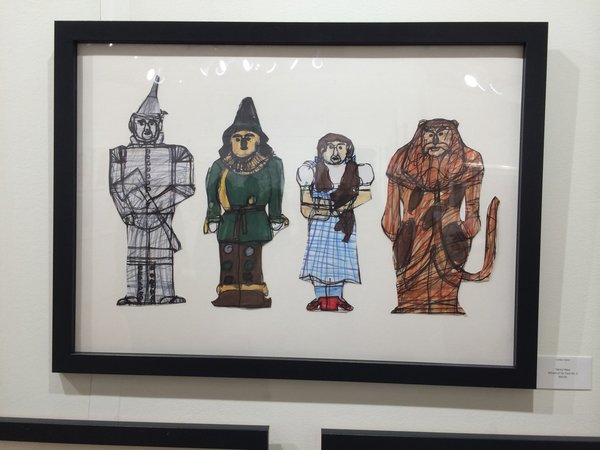

The idea of an emerging outsider artist may seem a bit of an oxymoron, but Columbus, Ohio’s Henry Hess appears to fit the bill. At only 15 years old, he’s already made a bit of a stir in the close-knit Columbus art scene for his exuberant renderings of characters and props from his favorite musicals, including Chiddy Chiddy Bang Bang , The Wizard of Oz , and Mary Poppins to name just a few. Although Hess rarely speaks aloud (gallerist Duff Lindsay, who is showing Hess’s work for the first time outside of Ohio at the fair, says he’s never actually had a conversation with the teenager), his work seems to speak for him, a tendency his parents have encouraged by providing a studio space and materials to let his creative energy run wild.
Although Hess has dabbled in sculpture and installation (including a full-scale recreation of the roadster from Chiddy ) most of his efforts are directed at his small character constructions in paper and marker, which are made to be held in the hand and transported in one of the many tote bags he carries at all times. Hess is ambivalent about showing his work and only agrees to part with select pieces—the ones he likes best are handled to the point of disintegration. As the gallery’s press release says of his work: “The intended audience is an extraordinary teenager named Henry Hess.”
ROBERT ADELE DAVIS
Webb Gallery & American Primitive


Robert Adele Davis is a strong presence in this year's Outsider Art Fair; his convoluted string works hang in both Webb Gallery’s and American Primitive’s booths. The 67-year-old Texan’s main task is caring for his for his 90-year-old mother, in part by utilizing the alleged healing powers of scalar wave tones, which he says will eventually come to replace non-auditory medicine. Accompanied by the unsettling frequencies, he generally works on his art in near-darkness and has expressed apprehension about showing the pieces in well-lit spaces.
Davis’s output ranges from mandala-esque forms to more recognizable figurative shapes, although he says that his hands create the labyrinthine compositions automatically with minimal conscious intent on his part. He was pleasantly surprised to discover that his recurring crows-foot motif bears a striking resemblance to shapes found in cave paintings as well as figures in the latest discoveries in physics, a field he’s schooled himself in over the years. Like the rest of his approach, his media of choice tends toward the unusual—he sews patterns onto found hubcaps and articles of his own clothing, which are often tied up to the point of being unwearable.
ALYSON VEGA
Fountain House Gallery


A self-taught fabric artist, Alyson Vega enjoyed making quilts and sewing keepsakes long before she suffered the tumor-induced stroke and subsequent brain surgery that made everyday acts of logic, communication, and recall extremely difficult for the New York math teacher (who holds a B.A. from Harvard in Japanese Folklore and Mythology). The same events, however, seemed to trigger a creative explosion of sorts for Vega—afterward, she began collecting materials and objects to incorporate into her increasingly-complex soft sculptures. These objects range in form from flat, figurative scenes to more abstract works that resemble organs.
Nurtured by Fountain House Gallery, a not-for-profit arts initiative dedicated to enriching the lives of New Yorkers with mental disabilities and illnesses through the support of their creative endeavors, Vega has established her own idiom. The works on view in Fountain House’s booth show the artist making sense out of the apparent chaos of both dreams and waking life, with all the struggle (and joy) such an effort entails.











